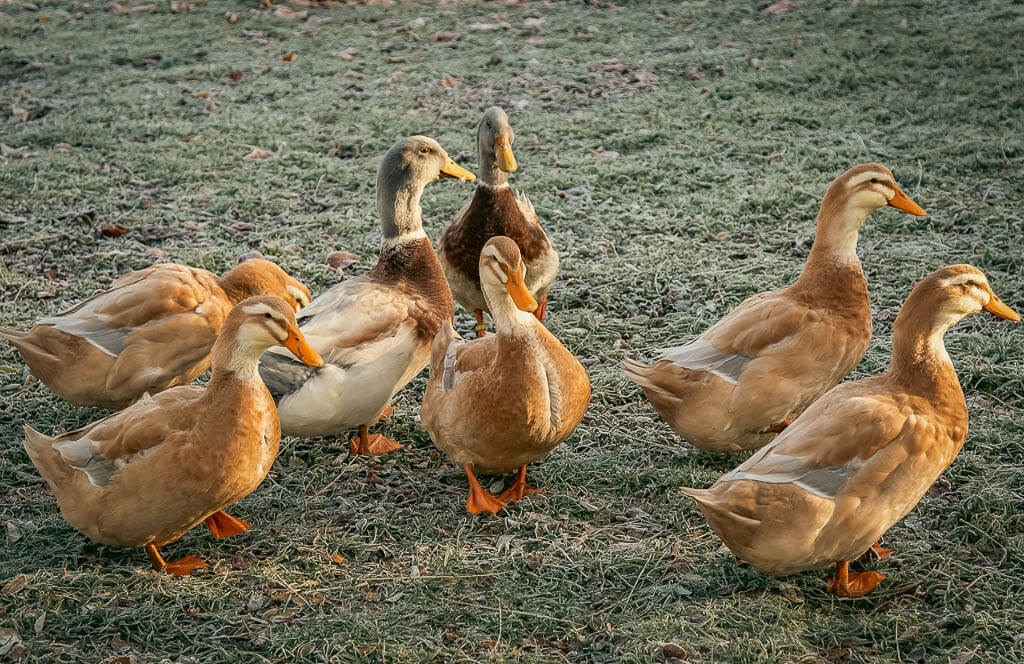Saxony Duck

Scientific Name
Anas platyrhynchos domesticus
Measurements:
| Feature | Male (Drake) | Female (Duck) |
|---|---|---|
| Weight | 3.5 kg | 3.0 kg |
| Bantam Weight | ~1.1–1.2 kg | ~1.0 kg |
| Egg Weight | 80 g | 80 g |
Status
The Saxony is a German domestic duck developed in the 1930s by Albert Franz in Saxony. It was almost wiped out during World War II but was revived from surviving birds and parent breeds. It was officially recognized in East Germany in 1957 and later worldwide. Today, it is considered “threatened” in North America and “at risk” in Australia. A bantam version also exists in Australia and is mostly used for shows.
Identification
Saxony ducks are heavy, muscular birds with compact bodies held at a 25° angle. Drakes have a blue-grey head, white neck ring, rich chestnut breast, and cream underbody. Ducks are light buff with two white stripes on the face and a creamy underbody. Both have yellow–orange bills and orange legs.
Voice
Like most domestic ducks, females make a loud quacking sound, while drakes are much quieter with a soft rasping call.
Diet
They are omnivores and eat grasses, grains, insects, snails, and other small invertebrates. They also forage well when allowed to free-range.
Distribution
Originally from Germany. Now found in Europe, North America, and Australia. A bantam Saxony variety is mainly seen in Australia.
Habitat
They adapt well to farms, smallholdings, and grassy areas with access to clean water for swimming and foraging.
Breeding
Saxony ducks lay 80–100 white eggs each year. They are dual-purpose birds, raised for both meat and eggs. Bantam Saxonies share the same colour genetics but are smaller in size.
Wintering
They are hardy ducks and tolerate cold weather well, especially with shelter and access to unfrozen water.
Conservation
Their numbers remain low in several countries. They are listed as “threatened” by the American Livestock Conservancy and “at risk” in Australia. Conservation depends on dedicated breeders and small farms.
